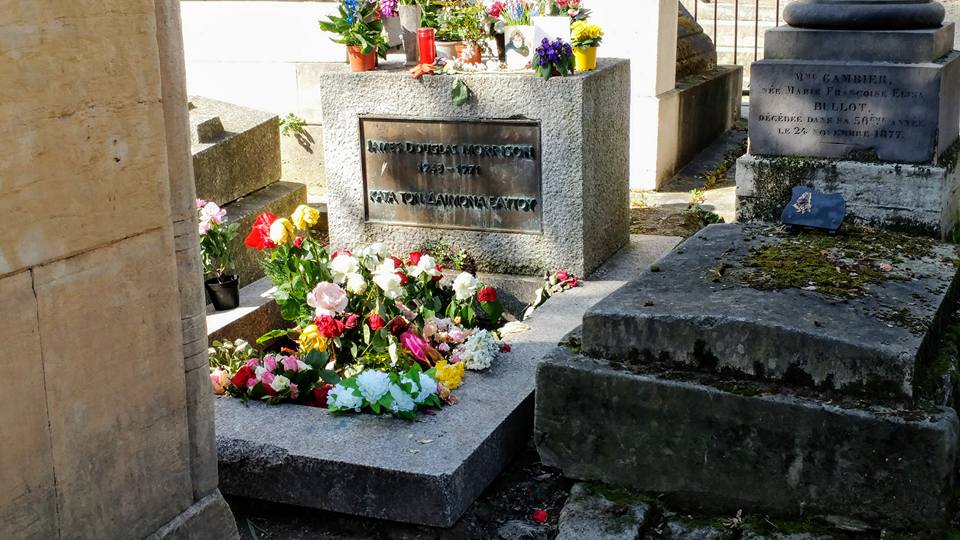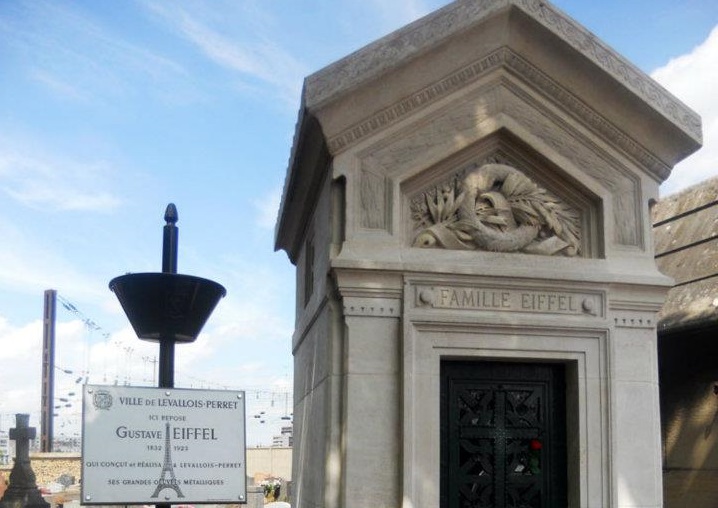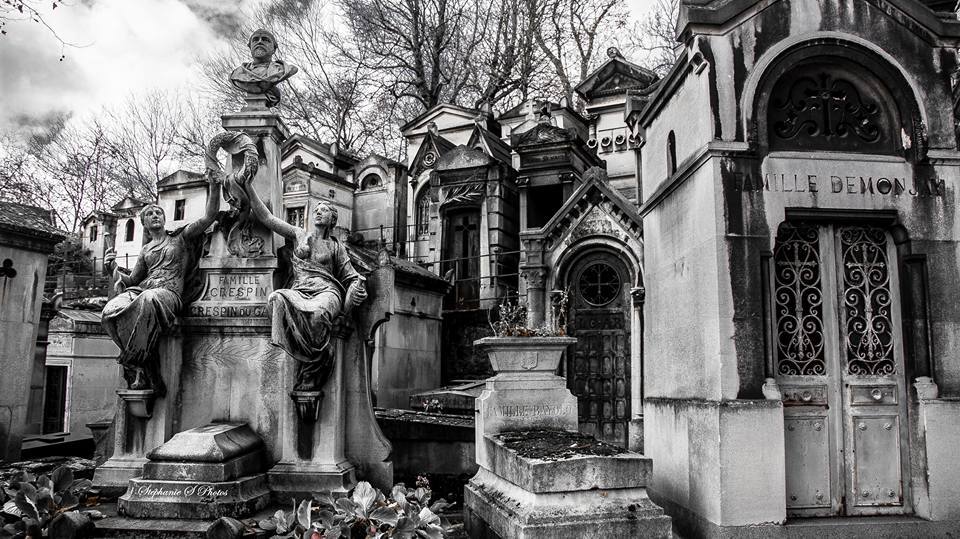Famous People Buried in Paris
Paris has, for hundreds of years, been such a magnet for the living that it shouldn’t be surprising that so many famous people wanted to make the City of Lights their final resting place.
One interesting note is that in Paris, there is actually a law that people must be buried in cemeteries. That makes a few of the people on this list (those buried at the Pantheon or the Pasteur Institute) noted exceptions to the rule. You’ll see by the names of the people not buried in cemeteries that it’s quite an honor, given by the French government.
So let’s take a little tour of some of the most famous graves in Paris. Keep in mind that there are plenty more where these came from.
Here Are The Most Famous People Buried in Paris
Jim Morrison

This is perhaps the most famous grave in Paris, although the occupant isn’t even French. Morrison died in a bathtub in Paris, and his gravesite in Pere Lachaise has been a pilgrimage site for Doors fans (and drunkards in general) ever since. Jim’s fans used to decorate the graves’ surroundings – as well as points throughout the cemetery – with graffiti. However, cemetery officials have been clamping down on that practice. You can still share a beer with the singer, as many people do; by pouring half the contents of your can over his grave. Incidentally, the Greek inscription on the grave’s headstone translates roughly to “true to his own spirit.”
Napoleon Bonaparte

It shouldn’t be surprising that this one-time French emperor should be buried in Paris. Οr that his famously big ego should be entombed forever in anything but an enormous tomb within a tomb within a tomb. Napoleon is buried at Les Invalides in Paris under the giant golden dome. Αlthough he was only moved here in 1861 (he died in 1821 and was originally buried on Saint Helena Island). His sarcophagus is really something to see – it’s unfathomably large, especially for such a small man. But when you learn that the emperor’s body is at the heart of many layers, it makes more sense. He’s immediately surrounded by six progressively-larger coffins made of tin, mahogany, lead, ebony, and oak; then, there’s the huge marble exterior, which is the part you see. Nah, this guy didn’t have an inferiority complex at all.
Frederic Chopin
A musician of another sort than Morrison, the composer Chopin is also buried at Pere Lachaise; however, rather than gifts of beer and cigarettes, admirers regularly leave bouquets of flowers all over his already lovely grave. Nevermind that he died in 1849. If you visit his grave now, you’d think he’d just died last week from the amount of flowers people leave there. But what many fans don’t realize is that while this Polish composer may have lived in Paris for many years, he’s not entirely in Paris in death. In fact, the grave in Pere Lachaise contains everything but Chopin’s heart. According to his dying wish, his heart was sent back to Warsaw and is buried at the Holy Cross Church there.
Louis Braille
This name itself might not be familiar, but the reading system he invented should be. Louis Braille was blind from the age of three after stabbing himself in the eye with one of his father’s woodworking tools. Although there were systems for blind people to read already in existence, they were all immensely complicated. His system, which was named after him, involved using raised points on a piece of paper which the blind or visually impaired person could read by running his or her fingers over the dots; and he invented it at the age of 15.
Braille was later adapted to include musical and math symbols and versions for just about every known language. The man himself went on to become a teacher at the Institute for the blind where he had been a student and died of tuberculosis in Paris in 1852 at age 43. His body was given a place of honor at the Pantheon on the 100th anniversary of his death in 1952.
Victor Hugo

Just about every city and town in Paris has a street named after this guy. You’ve no doubt seen his name, but just who was he? Victor Hugo was a 19th-century French writer and political activist who was actually exiled for more than 20 years for his political beliefs. He is most well-known outside France as the author of “Les Miserables” and “The Hunchback of Notre Dame.” However, within France, his left-wing politics and vocal pronouncements of his beliefs earned him the respect of countless like-minded citizens. When he returned from exile in 1870, Hugo was considered a national hero and elected to the National Assembly and Senate.
He died in Paris in 1885 at the age of 83, and more than two million people came to Paris to witness his funeral procession. He is buried in a crypt of the Pantheon in Paris, which he shares with Emile Zola and Alexandre Dumas.
Gustave Eiffel

Here’s another name that will be familiar to you. Even if you didn’t realize it was anything but the name of a famous tower. Gustave Eiffel was the French engineer and architect who designed the Eiffel Tower. Paris’ most well-known landmark (if not one of the best-known landmarks in the world). The tower was built in the late 1880s for the 1889 Universal Expo in Paris; while it’s the only thing he designed that bears his name, it’s certainly not the only world-famous monument he worked on. In fact, the Statue of Liberty’s internal structure was designed by Eiffel – so while you may not see his handiwork from the outside, rest assured that without Eiffel’s metal skeleton, that symbol wouldn’t have come to fruition. Eiffel died in 1923 at the age of 91 and is buried in the Levallois-Perret cemetery in Paris.
Edith Piaf
You might have heard the voice of this legendary French singer without knowing who it was; unless you saw the recent Oscar-winning film “La Vie en Rose” about Piaf’s life. In any case, hers is a voice that is so closely associated with Paris that it just wouldn’t be fitting for her to be buried anywhere else but Paris. And her grave in Pere Lachaise cemetery. Like that of Chopin, it is often covered with flowers as if her death was recent instead of back in 1963. While she was denied a proper funeral mass by the Catholic church, the route of her funeral procession was lined by thousands of mourners, many of whom stood outside the gates of Pere Lachaise until a short impromptu service was conducted beside her grave.
Eugene Delacroix
After you’ve toured the Louvre (or countless other art museums the world over) and seen the work of Delacroix, there’s no reason not to pay your respects at his grave in Paris. Some of his most famous paintings include “Liberty Leading the People,” “The Barque of Dante,” and even a portrait of Frederic Chopin. He died in 1863 and is buried in Cimitiere du Pere Lachaise in an enormous black tomb (you can’t miss it – his name is etched in gold on the side).
Simone de Beauvoir & Jean-Paul Sartre
We’re not surprised these days when famous people shack up with other famous people. In fact, we’re more surprised when they hook up with ordinary folks. So it shouldn’t be surprising that two famous names like Simone de Beauvoir & Jean-Paul Sartre were not only lovers in life but also share a grave in the Montparnasse cemetery. Beauvoir was a French writer and feminist; perhaps most famous for her book “The Second Sex,” while Sartre was a French writer and philosopher. Sartre’s best-known work is probably “Being and Nothingness.” (One can only imagine what pillow talk was like in that house.) Sartre died in 1980, followed by Beauvoir in 1986.
Man Ray
Aside from having one of the simplest (and clearly fake) names on this list, Man Ray is best known as an American surrealist artist. He lived much of his life in Paris and worked principally as a photographer with a taste for the avant-garde. In fact, he was so dedicated to his art that he even credited himself with inventing something he called the “Rayograph”. A photograph made without a camera, where he would put objects on photographic paper and then expose it to light. Whether he actually invented this process is debated, but if he did, countless elementary school kids have to thank him for one of their art projects. Ray died in Paris in 1976 and is buried in Cemetery Montparnasse.
Marcel Marceau
Not familiar with the name Marcel Marceau? Well, you’ll be familiar with his art. Marceau was easily the world’s most famous mime. In fact, he remains heralded as perhaps the best mime who ever lived (and I’ll bet you didn’t know there was even such a thing as a “best mime”). While Marceau may not have invented the mime, he is credited with much of what we think of as a typical mime’s repertoire today. Being trapped in an invisible cage? Walking into an invisible wind? Yeah, those were classic Marceau. And even Michael Jackson’s signature “moonwalk” is based on Marceau’s work. So when you’re in Paris, head over to Pere Lachaise and pay your (silent) respects.
Marie Curie
While women still struggle in the modern day to make a name for themselves in the male-dominated world of science, Marie Curie was way ahead of her time. Not only did she earn degrees in both math and physics, but she was also the first woman in all of Europe to get a doctorate of science. She went on to be the first woman to win the Nobel Prize for Physics (which she won with her husband and fellow scientist) in 1903; the first woman to be a professor and lecturer at the Sorbonne in Paris; she actually won a second Nobel Prize for Chemistry in 1911. She died in 1934 and became the first woman to be interred in the Pantheon, who wasn’t just buried there because of a husband. In so many ways, Curie continues to inspire generations of women interested in science. You go, girl.

Louis Pasteur
Here’s another name you might think looks familiar, and that’s for a good reason. Every time you drink pasteurized milk, you have Louis Pasteur to thank for that. This French scientist is the one who invented pasteurization as a way of preserving food. Although it was only after his death that the process he developed was christened with his name. But pasteurization isn’t the only thing that Pasteur did to save the general public from disease; he is also credited with developing the first vaccine for rabies, and much of his work was about the germ theory. Pasteur died in 1895 and was first buried in the Cathedral of Notre Dame. However, his body was later moved to a tomb in the Pasteur Institute, which had been founded in his name in 1888.
Rin Tin Tin
What kind of list would this be without at least one non-human entrant? Well, truth be told, it’d be a normal list (especially with a title like “famous people buried in Paris”). But Paris is no normal city. One of the cemeteries worth visiting in the city is the Paris Dog Cemetery. Its most famous resident is the dog Rin Tin Tin. Rin Tin Tin was a German Shepherd who starred in several Hollywood films, but he was actually born in France. As a puppy, he was rescued from a bombed dog kennel during World War I by an American serviceman who brought him back to Los Angeles and eventually made him a movie star.
The name Rin Tin Tin comes from a French puppet that was popular with French kids at the time. When Rin Tin Tin died in 1932 in L.A., the serviceman who had originally rescued him and who remained his owner throughout his life arranged to have the dog’s body returned to France so he could be buried in the country where he’d been born.
